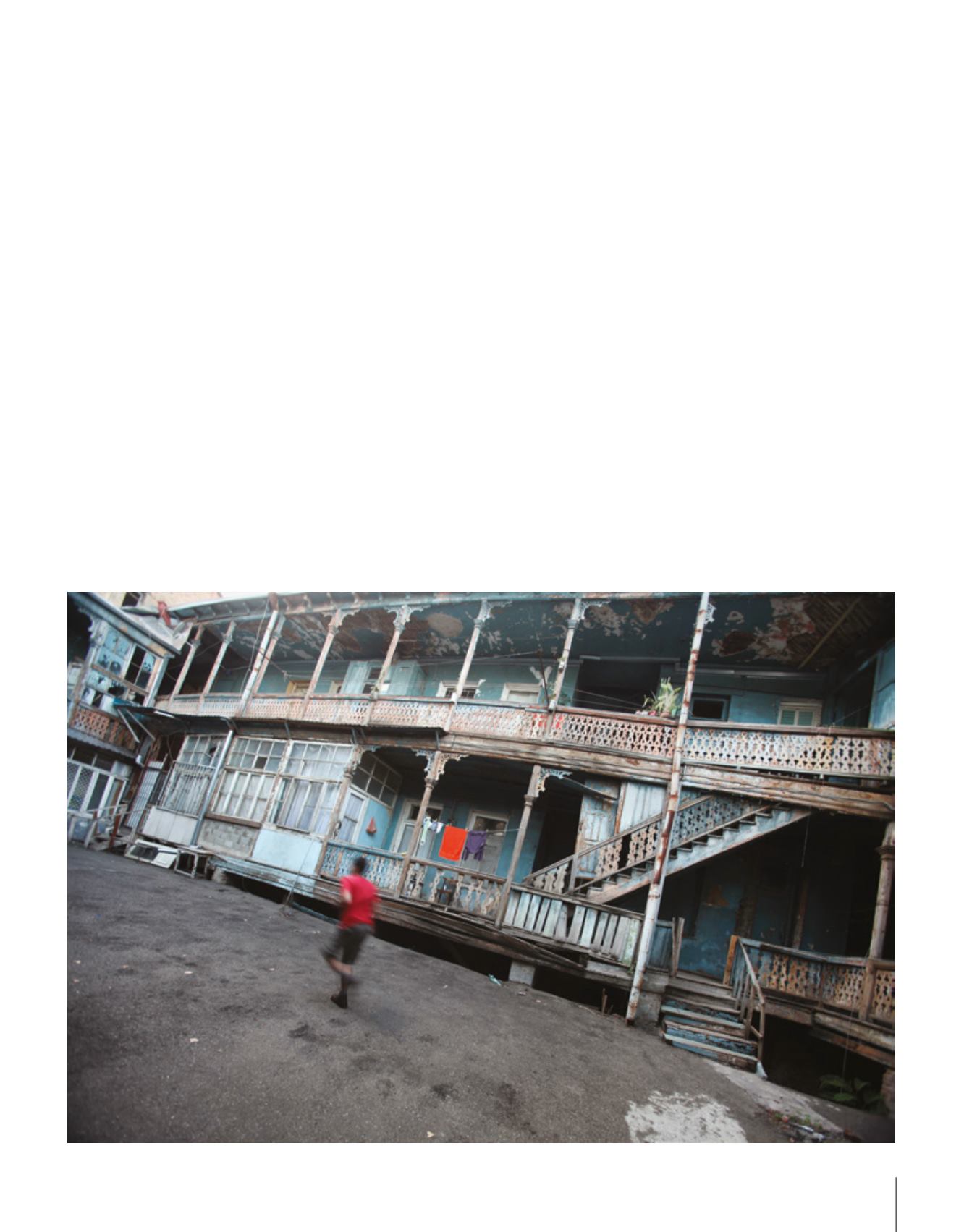
95
to establish communication with
them no matter what.
You will be greeted by a familiar
name in Tbilisi. The airport that is
17 km to the city center is run by
TAV. Train can be an alternative to
reach the city center. These trains
are very sparse but if you come
across one you can reach the
city center in 20 minutes. Another
option is to get on a bus. Number
37 municipal bus that leaves
regularly from the incoming
terminal at the airport is another
economical alternative. Groups of
a few people or those who prefer
a more luxurious trip can make
their first contact with Georgian
taxi drivers at the airport. Most
taxis do not have a taximeter
and the prices are subject to
bargaining. It is possible to
reach Tbilis from the airport for
“25 Gel” with a hard bargain. In
the city you will have problems
with the Georgian alphabet on
public transport when you ride on
buses and minibuses. Therefore
taxis will be your first preference.
Alternatively, you can use the
subway system with English stop
names. The Tbilisi subway system
has started operating in 1966 and
it is the fourth subway system
of the Soviet Union. The deep
and decorated subway stations
characteristic to all Soviet subway
systems are worth seeing.
Speaking of the underground,
an important point should not be
missed. It should be noted that
staying away from underpasses
when crossing large streets will
be good for your nose. The only
negative aspect of Tbilisi that
everyone agrees on is this.
If you are traveling in the
afternoon and enter the city when
it is getting dark – considering
that your expectations are
probably not too high – the
lighting of important buildings,
statues, churches and city walls
will surprise you. You should get
out immediately after checking
in at the hotel. Now you can
either go to a terrace, go down
to the river bank or climb one
of the hills but wherever you go
you should enjoy the scenery.
The underpasses are neglected
but the Tbilisi Municipality or
rather the Country of Georgia
is attentive to the lighting of the
capital city. Let me introduce:
if you turn your back to Lake
Kura that divides the city in two
– where the old city is located –
to the right you will be greeted
by the remains of the Narikala
Castle and the Kartlis Deda
Statue on the hill. Whereas on the
opposite shore will be the huge
Sameba Cathedral. The bridge
on the left that attracts one’s
attention with its round ellipsoid
lines, modern architecture and
trussed appearance is the Peace
Bridge. To the left is the Freedom
Square and on the huge tower in
Mtatsminda Park on the other hill
is the large radio-TV transmitter
that is another iconic structure of
the city. Now, since you have met
Tbilisi and got accustomed to the
city in general, if you still have not
had a glass of wine you can go
to Rustaveli Street or to Bambis
Rigi, Chardin or Erekle II streets in
the “Old Town” region to taste the
world famous Georgian wines at
a coffee shop or a restaurant.
Tbilisi is a small city. That is why
even though the slopes and
roads are sometimes tough, it is
still enjoyable to travel on foot.
A few days, or even a weekend
should be sufficient. Tbilisi is
an interesting city that can meet
the demands of any traveler
especially with its specific
architecture, old Tbilisi houses,
narrow streets, statues all around
the city, cathedrals, synagogue
and mosque along with streets
where the rich and the poor
mingle together to create striking
images.
I think the best point to start
a walk in the city is Barataşvili
Street. It is possible to name this
street as the union of contrasts.
The past and the future, the
new and the old are all together.
Modern buildings on the right
and old Georgian houses with
flowers hanging down expertly


